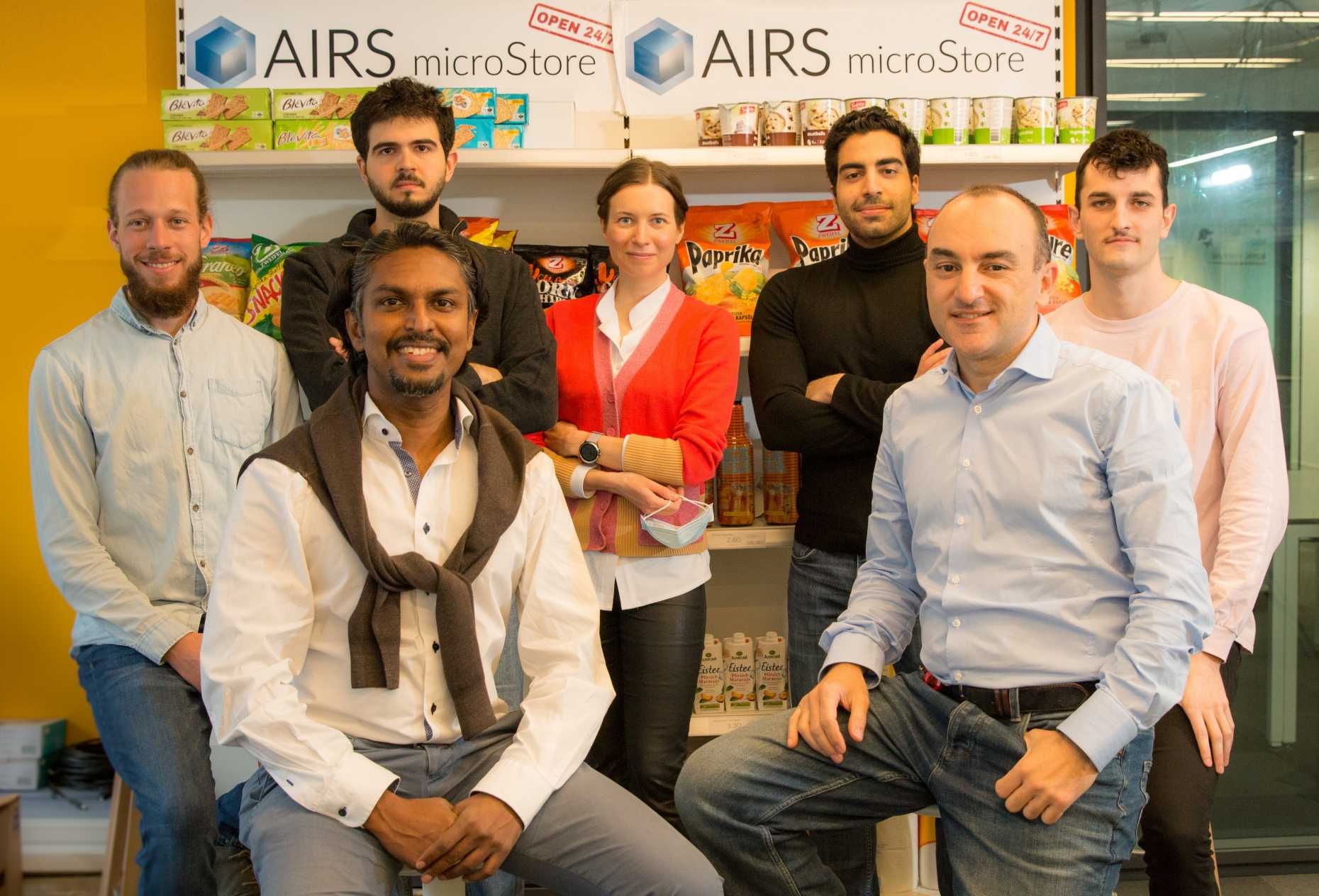24-hour shopping round the corner
It is the middle of the night. Your baby is hungry, but you have run out of formula milk. What now? This is not exactly the time to call on your friendly neighbour. But where can you buy anything at this time?
Having been caught in a similar situation, AI Retailer Systems (AIRS) founder Alejandro Garcia wished for a 24/7 shop in his neighbourhood. Since employment laws in Switzerland and Europe make it almost impossible to run stores that are open around the clock, the answer lay in an autonomous shop. We interviewed Alejandro about the technologies required, and why autonomous shops based on computer vision can compete with online shops.
How does an autonomous shop work?
The shopping process is divided into three steps:
- Check-in: The person entering the store needs to validate a payment method, so we know where to send the payment transaction.
- Shop: Once inside, a virtual shopping cart is assigned and the shopper’s activity in the store is monitored, so we correctly detect items taken off the shelves and assign them to his/her shopping cart.
- Checkout: Once the person leaves the shop, the items in his/her shopping cart will be charged automatically to the payment medium provided at check-in.
What technologies do you apply to make this work?
For check-in and for payment processing, we intend to support the most widely established solutions in the market.
We are building proprietary deep tech that forms the heart of the autonomous shop. Fundamentally, our technology has to determine accurately ‘who took what’. For the ‘who’ part, we only need to know where to charge the transaction, as a full identification of the person shopping is not required by our system. Solutions that rely on sensors installed directly on the shelves are costly and often require a full store retrofit, which drives up deployment and maintenance cost.
Hence, at AIRS we believe computer vision provides the most economical and flexible solution. Video cameras, typically installed on the ceiling, and other sensors help us detect the shopper’s activity and products taken off the shelves. The video streams are pre-processed at the source to comply with the local laws for data protection and privacy (e.g. Swiss Data Protection Act and the General Data Protection Regulation, GDPR in Europe).
What happens if someone picks up an item and later exchanges it for another product, discarding the first item on the wrong shelf?
Our system recognises each shelf activity and adds or removes a product from the virtual shopping cart when the shopper picks it off or places it back on a shelf. Even if the shopper misplaces a returned item, the system will know what to remove from the virtual cart.
Which types of shops are best suited for autonomous shopping and why should a retailer want to operate such stores?
Currently, we are targeting small convenience shops. The advantages of Computer Vision-based checkout-free stores are numerous:
- Convenient ‘Grab & Go’ shopping: Retailers can economically operate smaller stores that are closer to shoppers and open 24/7. We believe that this format can increase sales by at least 30%. Shoppers don’t have to queue or scan items themselves with unfamiliar devices or smart phone Apps. This also ensures safer and hygienic shopping.
- Staff cost: A reduction of up to 80% is possible for small shops. On-site staff time can be used for more valuable functions, such as helping shoppers, replenishing stock and ensuring store orderliness. Staff can attend to several nearby stores in an area.
- Reliability: Inaccurate charging and shoplifting is virtually impossible because checkout is at shelf level. Compared to self-scanning solutions, this is a major advantage in terms of reduction of stock losses.
In effect, a Computer Vision checkout-free solution digitalises the Point of Sales (PoS), making it more attractive to retailers. This is because we can support add-on functionalities such as in-store analytics and automated inventory management, with benefits similar to those of online shops, to help retailers optimise operations and increase sales.
Are there any autonomous stores already up and running?
We started with our prototype at the ETH Rocket Hub in late 2018. Since then, we have been running a demo version at the headquarters of one of our partners. Last year, we showcased our solution at Euroshop, the world's largest retail tradeshow, where retailers could try our ‘Grab & Go’ experience themselves. Now, we have our solution working in an ALDI store in Zurich, in a proof of concept phase. In addition, we have several ongoing projects to bring indoor and outdoor autonomous stores into operation throughout 2021.
We are always keen to learn of retailers that are interested in running their store fully autonomously or in a hybrid format in order to extend opening hours, and also of investors who would like to join our current financing round.

AI Retailer Systems technology installed in a supermarket (source: AI Retailer Systems)
Contact/Links:
external pageAI Retailer Systemscall_made
Do you want to get more "News for Industry" stories?
external pageSubscribe to our newslettercall_made
external pageFollow us on LinkedIncall_made
Are you looking for research partners at ETH Zurich?
Contact ETH Industry Relations
ETH spin-offs: facts and figures
Since 1996, 471 spin-offs have been founded at ETH Zurich. ETH transfer, the technology transfer office at ETH Zurich, supports recognized ETH spin-offs in the founding process and in their first years of operation.
With the help of the Pioneer Fellowship Programme, funded by the ETH Foundation, young researchers can develop innovative products and services based on their scientific work at ETH Zurich. A Pioneer Fellowship is awarded to young ETH entrepreneurial minds intending to develop a highly innovative product or service to be exploited commercially and/or for the benefit of society.


